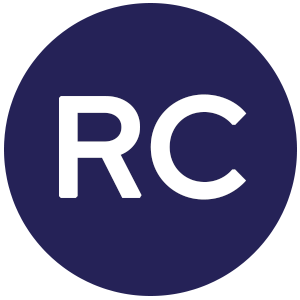The Joint Commission (TJC) sets standards and guidelines for the healthcare industry. An independent nonprofit organization, it recognizes more than 24,000 healthcare organizations across the United States.
The Commission’s mission is to “enable and affirm the highest standards of healthcare quality and patient safety for all.” The standards are a framework for how healthcare organizations should function to provide safe, high-quality care.
Although Joint Commission accreditation is voluntary and isn’t mandated by government regulators, the lack of a legal mandate doesn’t mean that accreditation isn’t important. Loss of accreditation can have a serious impact on a hospital’s reputation.
Joint Commission Temperature Monitoring Standards
Temperature monitoring is a critical component of Joint Commission compliance that affects multiple areas within healthcare facilities. While the Joint Commission does not prescribe specific daily monitoring requirements for temperature and humidity, they do provide clear guidelines for maintaining temperature in various environments. Specifically where temperature is concerned, the Commission follows the American Society of Heating, Refrigerating and Air-Conditioning Engineers (ASHRAE) Standard 170-2008 guidelines for temperature, which specify temperature ranges for various healthcare spaces.
For critical spaces such as operating rooms and areas where sterile items are stored, the Joint Commission suggests that spaces stay in constant compliance as long as they are being used for their intended purpose. To meet this standard, the Commission recommends that facilities implement a strategy to ensure continuous compliance, whether that’s having staff take regular temperature readings, installing real-time monitoring devices in each room, or setting up automated systems that sound alarms when temperatures deviate beyond specified levels.
For areas storing temperature-sensitive items like medications, vaccines, blood products, and specimens, the Commission recommends that healthcare facilities follow manufacturers’ storage instructions. When surveyed, hospitals must demonstrate that these requirements are being met, and that staff can identify potentially compromised items.
Temperature Monitoring Challenges in Healthcare Facilities
With hundreds of temperature-sensitive areas — including refrigerators, freezers, operating rooms, patient rooms, and storage areas for pharmaceuticals, blood, specimens, and food — manual monitoring becomes challenging to manage effectively.
Traditional manual temperature monitoring methods are:
- Time-consuming and labor-intensive
- Prone to human error and missed readings
- Difficult to document consistently for compliance purposes
- Reactive rather than proactive in identifying issues
Manual collection can lead to flawed analysis, inefficient and costly use of staff, and temperature issues that aren’t addressed promptly, jeopardizing patient safety and Joint Commission accreditation.
How Automated Temperature Monitoring Streamlines Compliance
This is where automated temperature monitoring systems become invaluable for healthcare facilities. An effective automated system transforms temperature monitoring from an error-prone manual task to a streamlined, efficient process that enhances compliance efforts.
Automated temperature monitoring solutions provide:
Continuous Real-Time Monitoring
Unlike manual checks that occur at scheduled intervals and can be easily affected by human error, automated systems continuously track temperatures, creating an uninterrupted record of conditions. This comprehensive monitoring detects every fluctuation in temperature, even during off-hours and weekends. This continuous oversight is essential for protecting sensitive items like blood and vaccines that require precise temperature control.
Instant Alerts and Proactive Response
When temperatures fall outside acceptable ranges, automated systems immediately notify designated staff, providing a path for quick response before valuable medications or specimens are compromised.
Comprehensive Documentation and Reporting
Automated systems generate timestamped records that can be easily retrieved during Joint Commission surveys or other regulatory inspections. Audit-ready reports demonstrate consistent compliance with temperature standards and document corrective actions taken in the case of any deviations. The Joint Commission specifically notes that “all non-compliant conditions are to be documented with corrective actions described,” making automated reporting systems key for maintaining compliance.
Resource Optimization
Without the need for staff to manually check and record temperatures, automated temperature monitoring frees healthcare staff to focus on patient care, improving efficiency and the quality of care.
Risk Mitigation
With real-time monitoring and alerts, facilities can identify and address potential equipment failures before they result in temperature excursions. It’s a proactive approach that minimizes risks to patient safety and reduces costly losses of temperature-sensitive items.
Cognosos: Simplifying Temperature Monitoring for Joint Commission Compliance
Cognosos’ solution for automated temperature monitoring provides healthcare facilities with a powerful tool to address temperature monitoring challenges and streamline Joint Commission compliance. Our comprehensive system:
- Automates the Collection of Temperature Data: Our sensors create a continuous record by logging temperature readings 24/7 throughout your facilities’ refrigerators and freezers.
- Provides Immediate Notifications: When temperatures dip below mandated ranges, designated staff get instant notifications, allowing for prompt intervention.
- Generates Compliance-Ready Reports: Our system automatically creates detailed, timestamped reports that satisfy Joint Commission documentation requirements and show your facility’s commitment to maintaining proper temperature conditions.
- Integrates Seamlessly: The Cognosos solution works with your existing infrastructure, ensuring a smooth implementation with minimal disruption to your operations.
- Reduces Spoilage and Costs: By preventing temperature excursions that could damage medications, vaccines, and other supplies, our system helps protect inventory and avoid added expense.
- Reduces Infection Risk: Proper temperature monitoring helps stifle bacteria and associated infection risk.
Take the Next Step Toward Streamlined Compliance
Don’t let temperature monitoring challenges jeopardize your Joint Commission accreditation or patient safety. Transform your approach to compliance from a reactive, manual process to a proactive, automated system that enhances patient safety, improves efficiency, and reduces costs.
See how the Cognosos solution can transform your hospital’s temperature monitoring process. Get in touch today.



